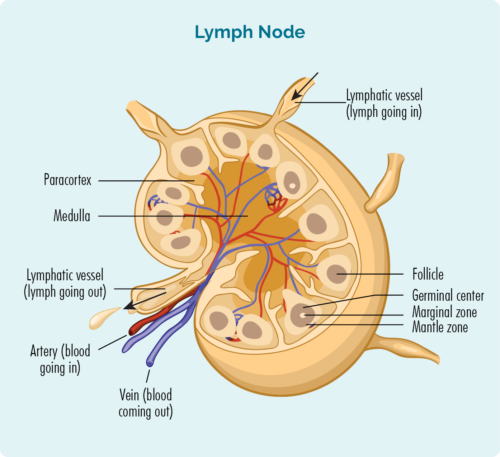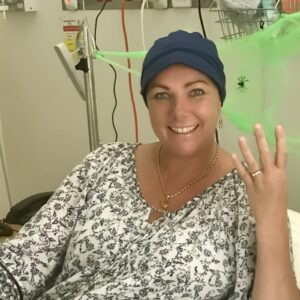To understand MCL you need to know a bit about your B-Cell lymphocytes.
B-Cell lymphocytes:
- Are a type of white blood cell
- Fight infection and diseases to keep you healthy.
- Remember infections you had in the past, so if you get the same infection again, your body’s immune system can fight it more effectively and quickly.
- Are made in your bone marrow (the spongy part in the middle of your bones), but usually live in your spleen and your lymph nodes. Some live in your thymus and blood too.
- Can travel through your lymphatic system, to any part of your body to fight infection or disease.
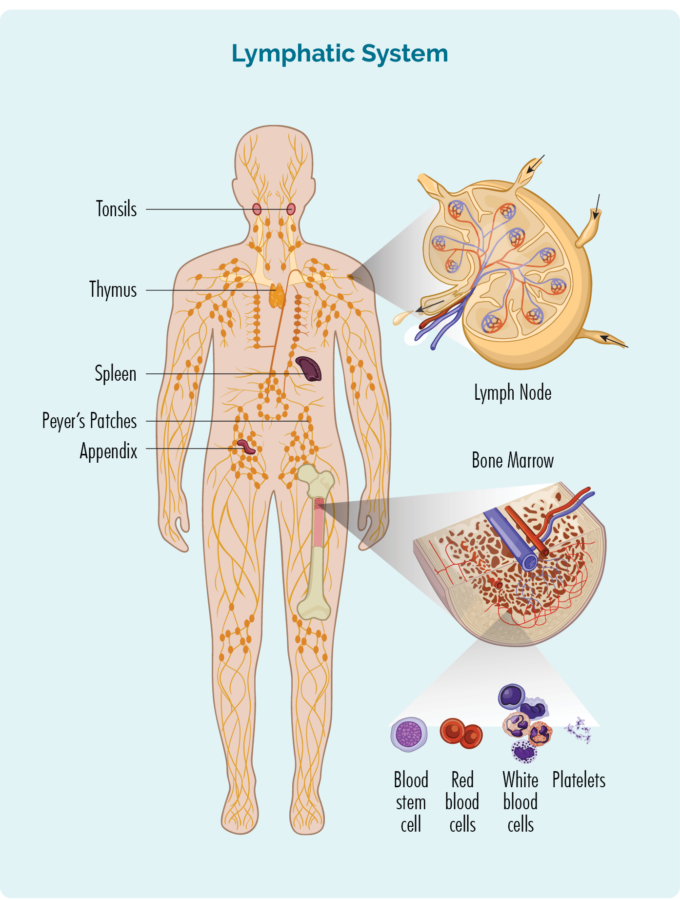
B-cell Lymphocytes and MCL
MCL develops when some of your B-cells become cancerous. They grow uncontrollably, are abnormal, and do not die when they should.
When you have MCL your cancerous B-cell lymphocytes:
- Will not work as effectively to fight infections and disease.
- Can become larger than they should and can look different to your healthy B-cells.
- Can cause lymphoma to develop and grow in any part of your body.
- Are spread out (diffuse) rather than grouped closely together.
Although MCL is usually a fast growing (aggressive) lymphoma, some people with MCL can be cured with treatment, even if you are diagnosed with an advanced stage. An advanced stage of lymphoma is very different to advanced stages of other cancers which cannot be cured.
Symptoms of Mantle Cell Lymphoma
The symptoms of Mantle Cell Lymphoma can be different among people. Symptoms you get will depend on whether you have an indolent or aggressive type of MCL, and where in your body the MCL is.
If you have an indolent MCL your only symptom may be an enlarged spleen. However, this can often go unnoticed as it grows slowly over a long period time, so may only be found when you have scan or physical examination for something else.
If you have an aggressive MCL you may notice a lump that comes up quickly under your skin in your neck, armpit or groin. This is a swollen lymph node that swells as it fills with cancerous lymphoma cells.
Symptoms of Lymphoma
- Swollen lymph nodes
- Bleeding or bruising more that usual – including in your poo
- Shortness of breath
- Extreme tiredness (fatigue) not improved with rest or sleep
- Pain or weakness in muscles, bones and joints
- Infection that don’t go away or keep coming back
- Loss of appetite (not wanting to eat)
- Unintended weight loss
- B-symptoms.
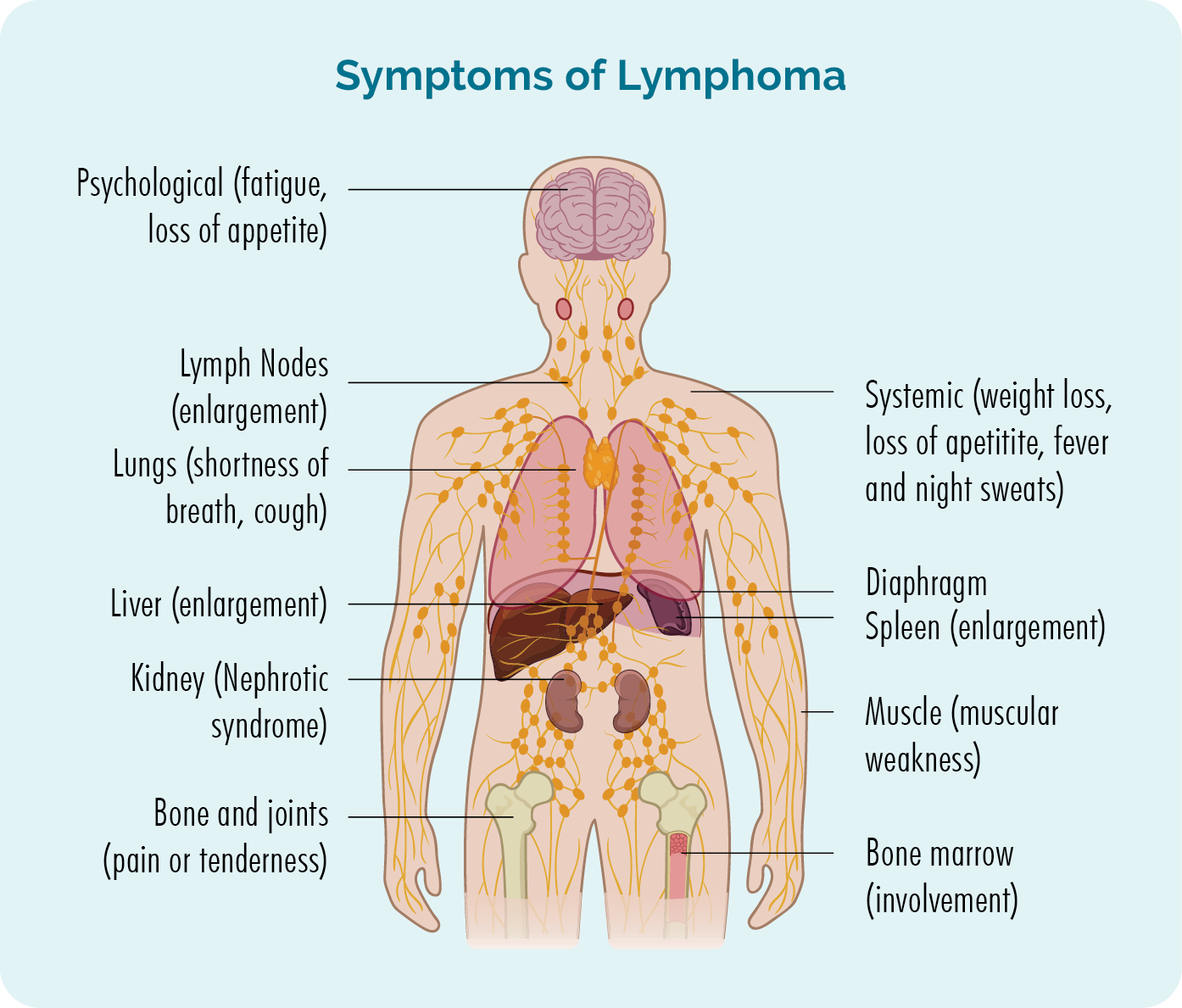
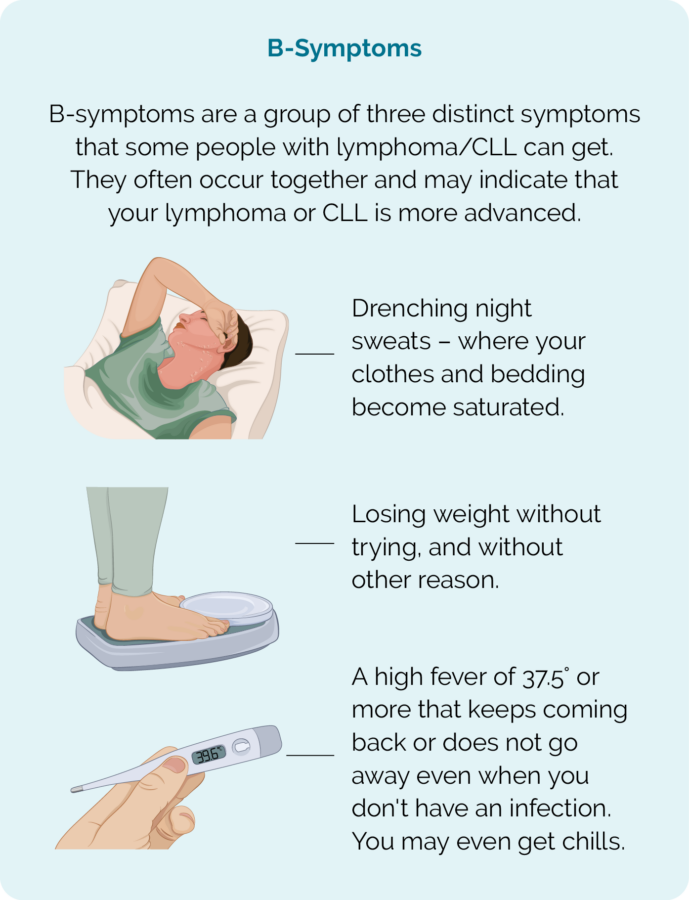
Patient story - Meet Steve Towell as he talks about his experience living with MCL
For the full version of Steve’s talk, click here.
Diagnosing Mantle Cell Lymphoma
Diagnosing MCL can sometimes be difficult and can take several weeks.
If your doctor thinks that you may have lymphoma, they will need to organise a number of important tests. These tests are needed to either confirm or rule out lymphoma as the cause for your symptoms. Because there are several different subtypes of MCL, you may have extra tests to find out which one you have. This is important because the management and treatment of your subtype may be different to other subtypes of MCL.
To diagnose MCL you will need a biopsy. A biopsy is a procedure to remove part, or all of an affected lymph node and/ or a bone marrow sample. The biopsy is then checked by scientists in a laboratory to see if there are changes that help the doctor diagnose MCL.
When you have a biopsy, you may have a local or general anaesthetic. This will depend on the type of biopsy and what part of your body it is taken from. There are different types of biopsies and you may need more than one to get the best sample.
Blood tests
Blood tests are taken when trying to diagnose your lymphoma, but also throughout your treatment to make sure your organs are working properly and can cope with our treatment.
Core or fine needle biopsy
Core or fine needle biopsies are taken to remove a sample of swollen lymph node or tumour to check for signs of MCL.
Your doctor will usually use a local anaesthetic to numb the area so you don’t feel any pain during the procedure, but you will be awake during this biopsy. They will then put a needle into the swollen lymph node or lump and remove a sample of tissue.
If your swollen lymph node or lump is deep inside your body the biopsy may be done with the help of ultrasound or specialised x-ray (imaging) guidance.
You might have a general anaesthetic for this (which puts you to sleep for a little while). You may also have a few stitches afterwards.
Core needle biopsies take a bigger sample than a fine needle biopsy.
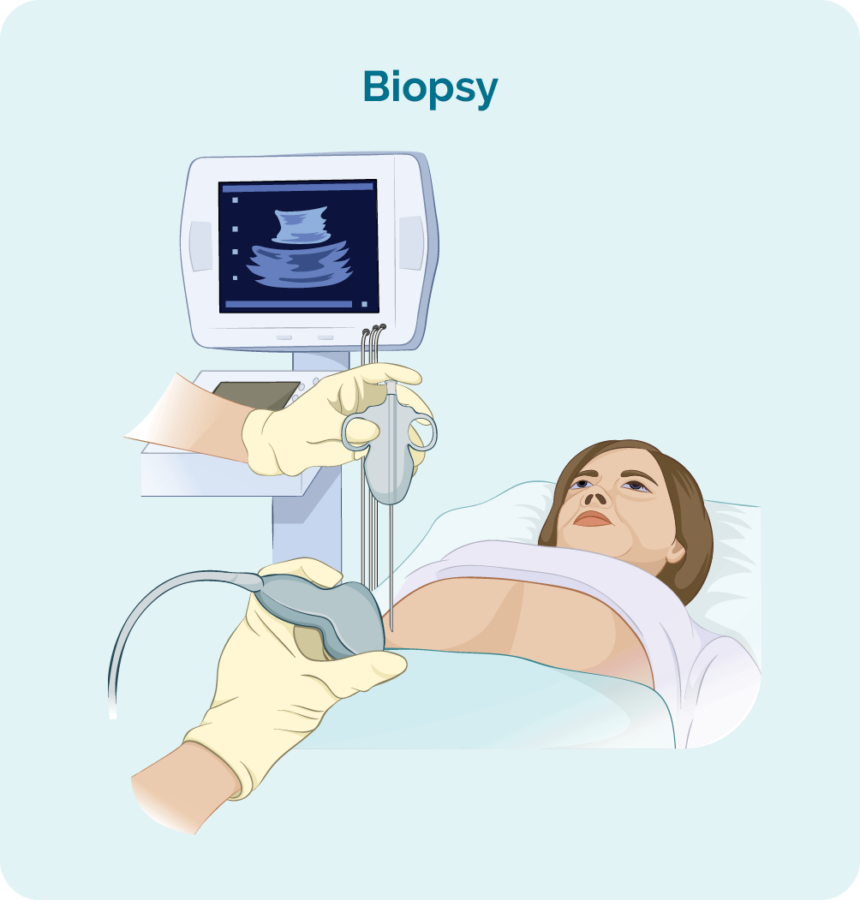
Excisional node biopsy
Excisional node biopsies are done when your swollen lymph node or tumour are too deep in your body to be reached by a core or fine needle biopsy. You will have a general anaesthetic which will put you to sleep for a little while so you stay still, and feel no pain.
During this procedure, the surgeon will remove the whole lymph node or lump and send it to pathology for testing.
You will have a small wound with a few stitches, and a dressing over the top.
Stitches usually stay in for 7-10 days, but your doctor or nurse will give you instruction on how to care for the dressing, and when to return to have the stitches out.
Staging MCL
Once your diagnosis of MCL is confirmed you have more tests to see how many areas of your body are affected by the lymphoma. This is called staging.
Staging refers to how much of your body is affected by your lymphoma – or, how far it has spread from where it first started.
B-cells can travel to any part of your body. This means that lymphoma cells (the cancerous B-cells), can also travel to any part of your body. You will need to have more tests done to find this information. These tests are called staging tests and when you get results, you will find out if you have stage one (I), stage two (II), stage three (III) or stage four (IV) MCL.
Your stage of MCL will depend on:
- How many areas of your body have lymphoma
- Where the lymphoma is including if it is above, below or on both sides of your diaphragm (a large, dome-shaped muscle under the rib cage that separates the chest from your abdomen)
- Whether the lymphoma has spread to your bone marrow or other organs such as the liver, lungs, skin or bone.
Stages I and II are called ‘early or limited stage’ (involving a limited area of your body).
Stages III and IV are called ‘advanced stage’ (more widespread).
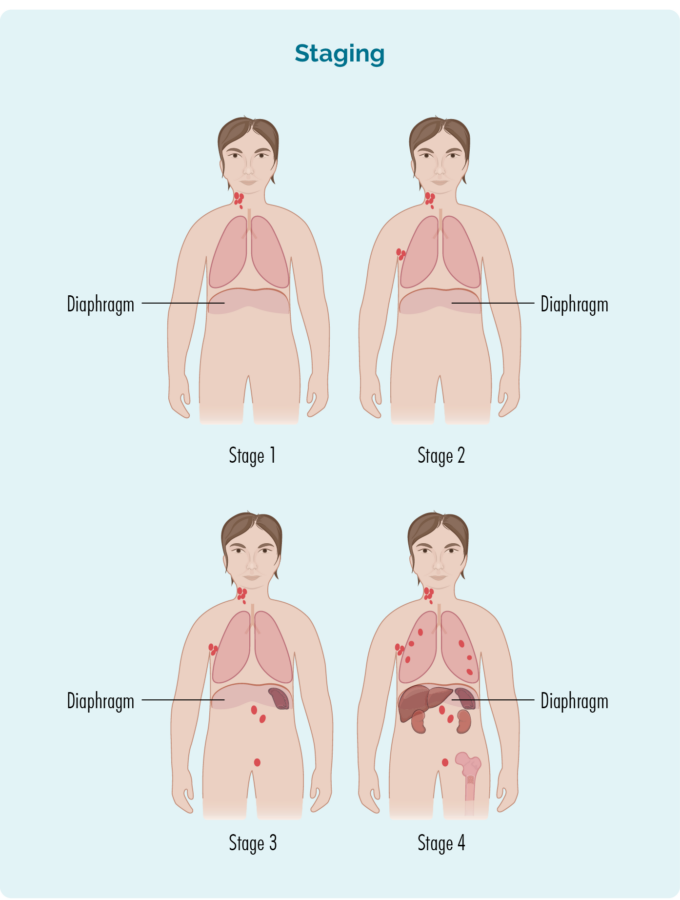
Stage 1 | one lymph node area is affected, either above or below the diaphragm* |
Stage 2 | two or more lymph node areas are affected on the same side of the diaphragm* |
Stage 3 | at least one lymph node area above and at least one lymph node area below the diaphragm* are affected |
Stage 4 | lymphoma is in multiple lymph nodes and has spread to other parts of the body (e.g. bones, lungs, liver) |
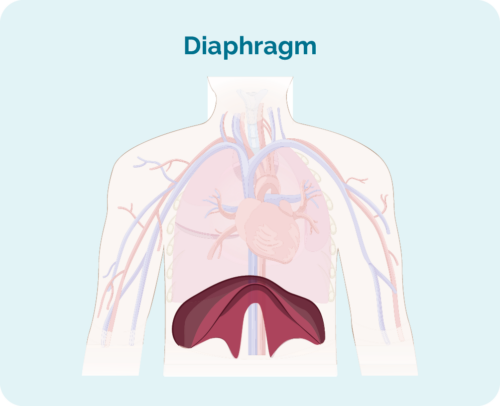
Extra staging information
Your doctor may also talk about your stage using a letter, such as A,B, E, X or S. These letters give more information about the symptoms you have or how your body is being affected by the lymphoma. All this information helps your doctor find the best treatment plan for you.
Letter | Meaning | Importance |
A or B |
|
|
E & X |
|
|
S |
|
(Your spleen is an organ in your lymphatic system that filters and cleans your blood, and is a place your B-cells rest and make antibodies) |
Tests for staging
To find out what stage you have, you may be asked to have some of the following staging tests:
Computed tomography (CT) scan
These scans takes pictures of the inside of your chest, abdomen or pelvis. They provide detailed pictures that provide more information than a standard X-ray.
Positron emission tomography (PET) scan
This is a scan that takes pictures of the inside of your whole body. You will be given and needle with some medicine that cancerous cells – such as lymphoma cells absorb. The medicine that helps the PET scan identify where the lymphoma is and the size and shape by highlighting areas with lymphoma cells. These areas are sometimes called “hot”.
Lumbar puncture
A lumbar puncture is a procedure done to check if you have any lymphoma in your central nervous system (CNS), which includes your brain, spinal cord and an area around your eyes. You will need to say very still during the procedure, so babies and children may have a general anaesthetic to put them to sleep for a little while the procedure is done. Most adults will only need a local anaesthetic for the procedure to numb the area.
Your doctor will put a needle into your back, and take out a little bit of fluid called “cerebral spinal fluid” (CSF) from around your spinal cord. CSF is a fluid that acts a bit like a shock absorber to your CNS. It also carries different proteins and infection fighting immune cells such as lymphocytes to protect your brain and spinal cord. CSF can also help drain any extra fluid you may have in your brain or around your spinal cord to prevent swelling in those areas.
The CSF sample will then be sent to pathology and checked for any signs of lymphoma.
Bone marrow biopsy
- Bone marrow aspirate (BMA): this test takes a small amount of the liquid found in the bone marrow space.
- Bone marrow aspirate trephine (BMAT): this test takes a small sample of the bone marrow tissue.
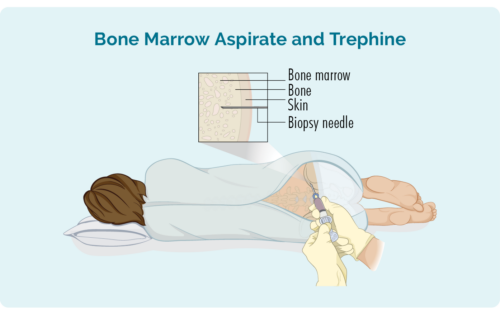
The samples are then sent to pathology where they are checked for signs of lymphoma.
The process for bone marrow biopsies can differ depending on where you are having your treatment, but will usually include a local anaesthetic to numb the area.
In some hospitals, you may be given light sedation which helps you to relax and can stop you from remembering the procedure. However many people do not need this and may instead have a “green whistle” to suck on. This green whistle has a pain killing medication in it (called Penthrox or methoxyflurane), that you use as needed throughout the procedure.
Make sure you ask your doctor what is available to make you more comfortable during the procedure, and talk to them about what you think will be the best option for you.
More information on bone marrow biopsies can be found at our webpage here.
Your lymphoma cells have a different growth pattern, and look different to normal cells. The grade of your lymphoma is how quickly your lymphoma cells are growing – whether it’s indolent or aggressive. The more aggressive your MCL is, the more different they will look to normal cells.
The grades are Grades 1-4 (low, intermediate, high). If you have a higher grade lymphoma (more aggressive), your lymphoma cells will look the most different from normal cells, because they are growing too quickly to develop properly. An overview of the grades is below.
- G1 – low grade – your cells look close to normal, and they grow and spread slowly.
- G2 – intermediate grade – your cells are starting to look different but some normal cells exist, and they grow and spread at a moderate rate.
- G3 – high grade – your cells look fairly different with a few normal cells, and they grow and spread faster.
- G4 – high grade – your cells look most different to normal, and they grow and spread the fastest.
All this information adds to the whole picture your doctor builds to help decide the best type of the treatment for you.
It is important that you talk to your doctor about your own risk factors so you can have clear idea of what to expect from your treatments.
Connect with others with MCL or other subtypes of lymphoma
It can be stressful finding out you have MCL. Connecting with others who have been through, or are going through similar things can help.
If you would like to connect with others living with MCL or other subtypes of lymphoma you can join our closed Facebook groups by clicking the links below.
Mantle Cell Lymphoma Down Under
Lymphoma Care Nurses
You can also contact our Lymphoma Care Nurses. They are available to help with advice, to provide information services are available and updated information on MCL and its treatments. Contact them by clicking on the “Contact Us” button at the bottom of the screen
Causes of Mantle Cell Lymphoma & Cytogenetic Tests
Most people with Mantle Cell Lymphoma, have a genetic change called a translocation, involving chromosomes 11 and 14. This mutation causes your B-cells to make too much of a protein called ‘cyclin D1’.
Cyclin D1 is protein that promotes healthy cell growth. When you have too much of it though, it upsets the balance and causes too many B-cell lymphocytes to be made in the mantle zone of your lymph nodes. Because the cells are being made in amounts more than usual, they do not develop properly and become cancerous.
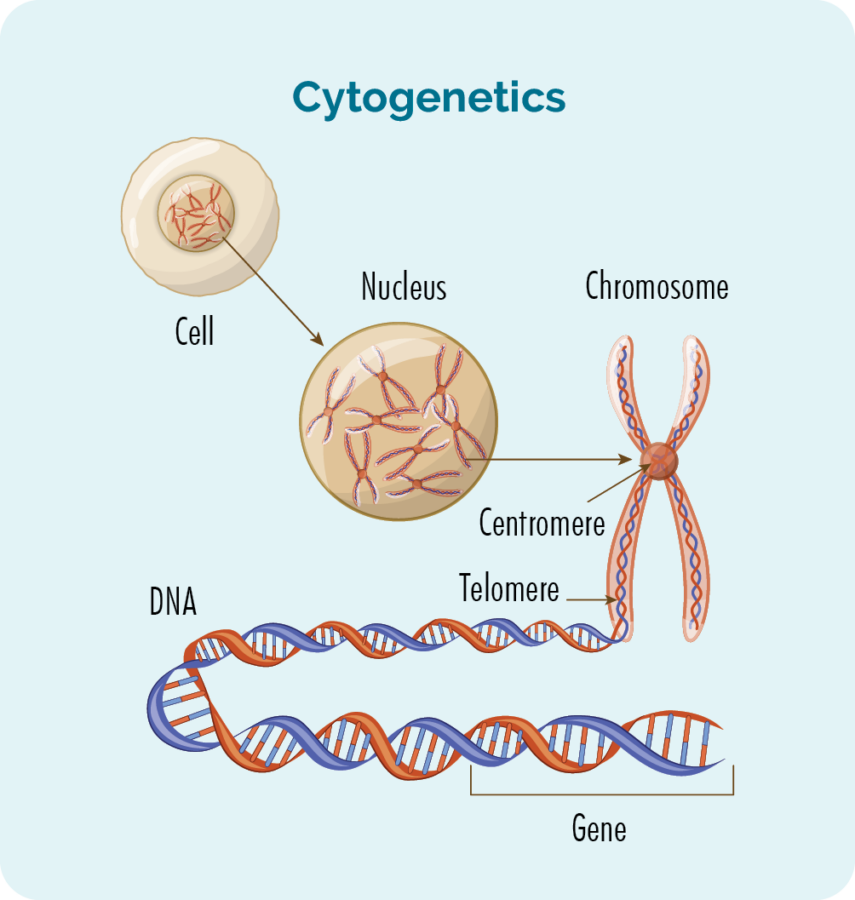
Cytogenetics explained
Cytogenetic tests are done to check for genetic variances that may be involved in your disease.
We usually have 23 pairs of chromosomes, and they are numbered according to their size. If you have MCL, your chromosomes may look a little different.
What are genes and chromosomes
Each cell that makes up our body has a nucleus, and inside the nucleus are the 23 pairs of chromosomes. Each chromosome is made from long strands of DNA (deoxyribonucleic acid) that contain our genes. Our genes provide the code needed to make all the cells and proteins in our body, and tells them how to look or act.
Translocation
The most common cytogenetic change in MCL is when a small part of two of your chromosomes swap places. This usually involves chromosomes 11 and 14. Each section of the chromosomes are numbered, and it is a section of the bottom part of these chromosomes (indicated with a q) that is swapped.
On chromosome 11 it is the section numbered 13, that swaps with section 32 on chromosome 14. When this happens it is called a translocation. It is often written as t(11:14)(13q:32q).
Deletion
Sometimes you might have a part of the chromosome missing. When this happens it is called a deletion. If the top part of your 17th chromosome is missing it will be written as del(17p).
It is important to find out what type of cytogenetic changes you have before you start treatment, because different changes need different types of treatment.
Treatments for MCL
There is no one size fits all approach to treating people with MCL. Your doctor will consider many things before coming up with treatment plan to recommend to you.
It’s important to remember that treatment is your choice and you have the right to ask as many questions as you need to feel comfortable with your decision. Once your and your doctor have agreed on a treatment plan, you will need to sign a consent form before you can receive treatment. This is an official way of saying you understand the risks and benefits of the treatment and are willing to have it.
Some things your doctor will consider, when developing a treatment plan for you include:
- The stage of your MCL and whether it is indolent or aggressive
- Any symptoms you are getting and how they are impacting your body and quality of life
- How old you are
- Your current physical and mental wellbeing, including any other illnesses or diseases your are being treated for
- Your preferences once you have all the information to make an informed choice.
First-line treatment
The first time you start treatment for MCL it is called first-line treatment. Common first-line treatment protocols for MCL include:
- R-CHOP
- R-DHAP
- R-maxi-CHOP
- Hyper-CVAD
- High-dose chemotherapy followed by an autologous stem cell transplant
- Bendamustine and Rituximab
Or, you could join a clinical trial if there is one available that you are eligible for. If you are interested in joining a clinical trial, ask you doctor if there are any available.
If you know the name of the treatment you will be having, click on the link below for more information on that protocol.
Prognosis for MCL
Prognosis is the term used to describe the likely path of your disease, how it will respond to treatment and how you will do during and after treatment.
There are many factors that contribute to your prognosis and it is not possible to give an overall statement about prognosis. MCL usually responds well to treatment, but it is not uncommon for it to relapse and need more treatment.
Factors that can impact prognosis
Some factors that may impact your prognosis include:
- You age and overall health at time of diagnosis.
- How you respond to treatment.
- What if any genetic mutations you have.
- The subtype of Hodgkin Lymphoma you have.
If you would like to know more about your own prognosis, please talk with your specialist haematologist or oncologist. They will be able to explain your risk factors and prognosis to you.
Relapsed and Refractory MCL
Most people with MCL will have a good response to their first-line treatment, and go into remission. Remission is when there is no sign of MCL left in your body, that can be detected on scans or other tests. However, it is common for MCL to relapse – or come back. For some, this may months after finishing treatment, but for most it can be two or more years.
For some people though, MCL does not improve, or even gets worse even when you are having treatment. When lymphoma dose not get better with treatment it is called refractory.
When you have relapsed or refractory MCL your doctor will likely recommend you join a clinical trial or start a new treatment that may work better for you.
Treatment for relapsed or refractory MCL
There are different types of treatment that may work well for you. The more common treatments for relapsed, or refractory MCL include:
- Clinical trial
- Targeted therapy – BTK inhibitor which may include ibrutinib (ImbruvicaTM), acalabrutinib (Calquence ™) or zanubrutinib (Brukinsa™)
- Immunomodulators – lenalidomide (RevlimidTM)
- Different combinations of chemotherapy
- Allogeneic stem cell transplant
- CAR T-cell therapy – approved but not yet publicly funded
Survivorship, Living with and after MCL
A healthy lifestyle, or some positive lifestyle changes after treatment can be a great help to your recovery. There are many things you can do to help you live well with MCL.
Many people find that after a cancer diagnosis, or treatment, that their goals and priorities in life change. Getting to know what your ‘new normal’ is can take time and be frustrating. Expectations of your family and friends may be different to yours. You may feel isolated, fatigued or any number of different emotions that can change each day.
Goals after treatment
The main goals after treatment for your MCL is to get back to life and:
- be as active as possible in your work, family, and other life roles
- lessen the side effects and symptoms of the cancer and its treatment
- identify and manage any late side effects
- help keep you as independent as possible
- improve your quality of life and maintain good mental health
Cancer Rehabilitation
Different types of cancer rehabilitation may be recommended to you. This could mean any of a wide range of services such as:
- physical therapy, pain management
- nutritional and exercise planning
- emotional, career and financial counselling.
More patient stories
Summary
- Mantle Cell Lymphoma (MCL) is a subtype of Non-Hodgkin Lymphoma that happens when your B-cell lymphocytes in the outer edge of your lymph nodes – the mantle zone, become cancerous.
- MCL is usually aggressive, but can also be indolent.
- Indolent lymphoma may not need treatment, but aggressive MCL will need treatment soon after you are diagnosed.
- There are several different types of treatments available for MCL.
- Most first-line treatments result in you going into remission, but it is common for MCL to relapse. You will need more treatment if your MCL relapses.
- If first-line treatment does not work, your MCL is called refractory. You will be started on a different treatment that may work better.
- Clinical trials are recommended for anyone with relapsed or refractory MCL.
- Support is available, you are not alone. You can contact our Lymphoma Care Nurses by clicking the Contact Us button at the bottom of the screen.
